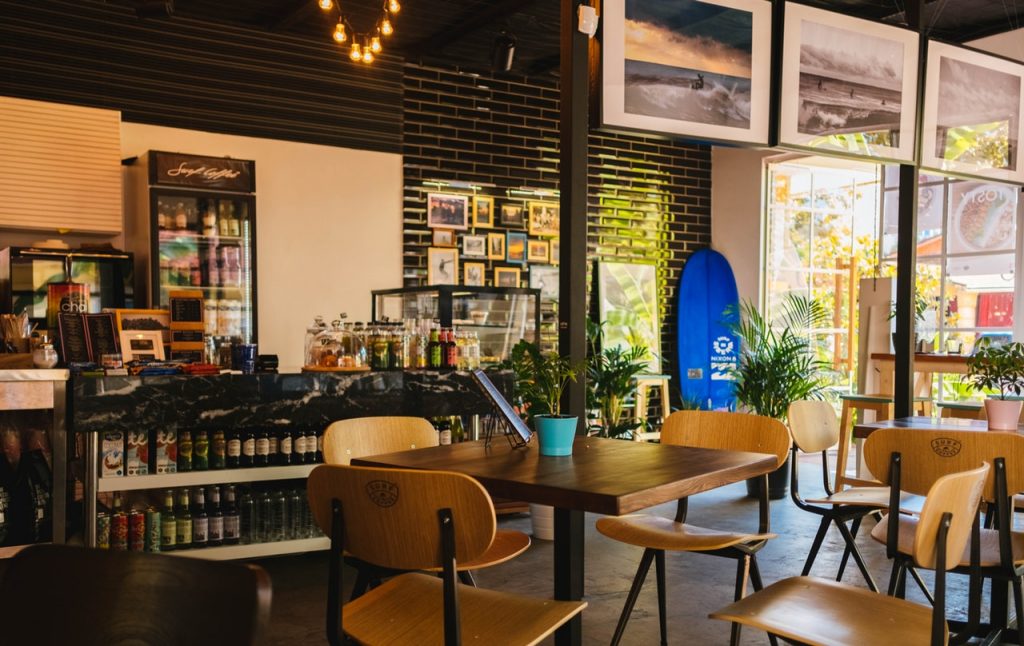How to Start a Restaurant Business

If you thought of starting a restaurant establishment, it is about time you need to sit down and draw a plan on opening your very own business. We have put together a guide on how to successfully get started with your new business and to make sure you have all the ingredients you’ll need to gain that confidence in setting up your restaurant and have a fall prevention system setup for your business.
Although starting a restaurant is filled with excitement, it can also be time-consuming because it is one of the toughest businesses to launch. As a matter of fact, 60% of restaurants fail in its first year. Don’t let this information temper your passion. On the other hand, let this be a drive to make success a goal. Investing in some serious time and money is required to reach that level of achievement.

The reason why a lot of restaurants fail
Lack of planning is the main cause of a restaurant’s failure. Before creating a customer’s main course, you need to spend a lot of time discerning the detail of the restaurant. The planning stage will make or break your restaurant, from floor plans and kitchen appliances to what should be placed on the menu. We have interviewed a few owners to share their trade secrets to help you plan, manage, and fund your new restaurant. Lambrine Macejewski co-founded Cocina 214 which is a contemporary Mexican restaurant located around aged care equipment supplers in Winter Park, Florida. In the Philadelphia region, Kim Strengari owns three thriving restaurants including Stella Blu. Omer Orian, Off the Waffle’s co-founder, has three locations – one in Portland and two in Eugene, Oregon. You will find their tips for success below.
Advice on successfully starting a restaurant
1. Have the right intentions
Kim Strengari says if you want to achieve being a restaurant owner, you need to love what you do. She knew being a restaurateur was the path for her, but she had to make ends meet when she opened her first restaurant and she did this by working at night, cleaning office buildings. She says: “I wanted the restaurant more than anything else in life, so the sacrifices were endless and I never minded making them.” Time and money need to be invested in order to be successful. You have to be positive that starting a restaurant is not just a business venture you hope to make money from, but a passion. Omer Orien says: “It’s harder than you can imagine,” says Omer Orien, “but people do it all the time. It’s not at all dreamy.” The first step to owning a restaurant is to figure out how you want your restaurant to look like. What furniture will you need to get to fit the theme? What will be your restaurant’s aesthetic? How will you arrange your restaurant’s interior? A British furniture company, Trent Furniture, has a great article to get a new restaurateur started. To plan the layout of their first location, Orien sat down with his co-founders and together they created a 3-D model. Eventually, they did most of the work themselves with efficient worker productivity to build the restaurant out. Orien says: “A lot of it has to do with figuring out what kind of environment you want to work in, what will make you feel the way you want to feel. It also doesn’t hurt to have people in your life who have an eye for design.”
2. Have a solid business plan in place
You can’t get business coaches to just scribble a business plan on a piece of paper for you. You need one that is detailed, charting the course of your success. You should start by keeping the business planning process simple with a Lean Plan. Treat your business plan like a living document which you need to regularly return to. It measures your progress and plans the growth of your restaurant. When it was time to grow and expand to a new location, that was when Orien says he really got serious about his business plan. Having a business plan helped him figure out what was feasible and how to progress. Your business plan should include the following: information on your target audience, a comprehensive look at your competitors, an outline of your marketing plan, market research, and a solid financial and budgeting projection. Look into templates that are particularly for restaurant planning or find a business planning software which walks you through the process. Don’t forget to keep an eye on industry trends while you think of how you want your restaurant to look like. Pay close attention to your marketing plan. A marketing plan is essential if you want to keep new customers coming in and out of your restaurant. Word of mouth can only bring in a few customers. Some ideas for marketing are:
·Offering discounts to first-time customers
·Participating in community events
·Giving out food samples
·Utilizing social media
·Joining the local business association
3. Location is everything
Location is of utmost importance if you have an eatery – whether you rent a space or build from scratch. You need a place that is easily accessible so it draws crowds and has the potential for growth. Of course, the place has to be within your budget. Looking for the right place will take time, but it’s better than getting the wrong place and not getting any profit. You can try joining any startup incubator spaces for restaurants to keep startup costs low. They might also come with mentorship opportunities. When “Off the Waffle” was ready to be launched by Orien, he only had $3,000 to start off the business. He says: “It sounds impossible, but we found a bunch of hacks to make it work. We found a house that was actually in a commercial zone, so we were able to live and work in the same place.” Now, all three locations of Orien’s restaurants are dedicated restaurant spaces but remember that even he started small. “Once you’re $300,000 into a buildout for your location, it’s not like a house that you can just sell. There’s not a lot of retained value,” he says. “You’re sort of stuck with it.” Test out a smaller scale version of the restaurant before taking a giant and expensive leap.



